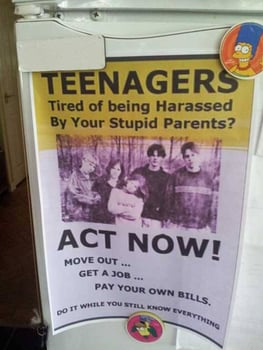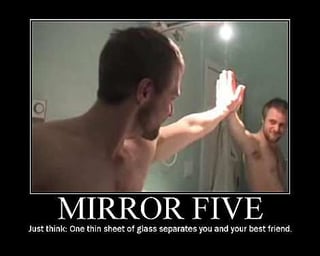In addition to owning C-Loans.com, I also own Blackburne & Sons, a $50 million private money commercial mortgage company that makes hard money permanent loans, as well as just bridge loans. This reduces the APR to your borrowers considerably.
Our best loan officer is Alicia Gandy, a lovely lady who has been with us now for 17 wonderful years. Alicia is such a big producer and such a diligent go-getter that we call her the Loan Goddess. Alicia taught me a clever marketing technique this week, a virtually cost-free technique that could be used by a commercial real estate salesman, a leasing agent, a property manager, as well as any commercial mortgage broker.
It's summer time. Many people are out hiking, biking, boating, or doing some other fun outdoor activity. The last thing most of us want to do is to work really hard during the final few weeks of the summer. Therefore business here at Blackburne & Sons is pretty slow.
Instead of goofing off, however, Alicia went out and killed something this week. Alicia called her twelve best brokers and complained, "Hey, I'm dying here! I have no business. If you bring me a commercial loan right now, your deal will be at the top of my stack, and I'll work my tail off on it." Each of her best brokers complained that they didn't have anything for her... and yet within 24 hours, Alicia had three new deals in the door!
"Gee, George, this is so obvious that its like the moron with the headphones repeating, "Breath in, breath out." Yeah, yeah... but when was the last time that you made twelve outgoing calls to your best brokers? That's what I thought.
Here's an idea: (1) Pull out a file folder right now and label it, "Best Brokers." (2) Take out a yellow legal pad and write down the names and phone numbers of your twelve best repeat customers. (3) Then, whenever you are slow, maybe you call these twelve special customers and petition for deals.
I have been using the term, "best brokers". As a lender, commercial loan brokers are one of the best repeat sources for commercial real estate loans. But if you are a commercial real estate salesman (properly called a commercial broker, even if you are only a salesman and not a broker), your twelve best repeat customers will probably be wealthy commercial real estate investors. If you are a leasing agent, your best repeat customers may be the owners of rapidly growing companies. But you get the concept. All of us have a dozen or so repeat customers who make up a big part of our annual sales, so get off the dime and dial them for dollars. (How about that for staying consistent with my metaphor - dime and dollar? Get it? Ha-ha!)
Have you created a link (or 20 links) to C-Loans.com on your real estate web site yet? The links should say "Commercial Loans" or "Commercial Mortgages" or "Commercial Real Estate Loans" or "Need a Commercial Mortgage?"
Remember, the home page of C-Loans.com is programmed to automatically capture the referring URL (the address of your web site) and to print it at the bottom of the corresponding C-Loans application. When the deal closes, we look up the lucky guy who put the link (or - even smarter - 20 links) to C-Loans.com on his website and notify him of the big referral fee check waiting for him. We once paid Alan Dunn of Spydercube.com a $21,250 referral fee on a $17 million land loan application that came from his site.
Now be sure to note: You do not need any special partner number. You do not need to notify us. You could create this link at 3:00 a.m. tonight, or better yet, create 20 links. By the way, Alan Dunn was asleep when this $17 million loan application was sent over from his site to C-Loans.com! "Asleep? How could you possibly know this, George?" In truth, I don't; but he certainly could have been asleep, and it makes for a great story. Ha-ha! These 20 links work automatically while you're sleeping, playing golf, or cuddled up with your honey. Notice the subtle upsell to 20 links rather than just one? Hey Dad, can I have $50? Twenty dollars??? What do you need $10 for?
Keep looking for the contact information (the contents of a business card) of any banker making commercial real estate loans. We'll trade you that information for a free directory of 2,000 commercial real estate lenders.
Do you need a lender who will allow the seller to carry back a second mortgage? Does your client have a balloon payment coming due on his commercial property? Has your bank offered him a discounted pay-off? Does your borrower have less-than-stellar credit? Is your client's company losing money? Is your borrower a foreign national? Do you need a non-recourse loan? Do you need a commercial loan with no prepayment penalty? Is your client's commercial property partially vacant? Do all of your commercial leases run out in the next 18 months? Do you need a lender who will allow a negative cash flow? Do you need a lender who will also look at the borrower's global income - income from salaries, other investments, etc.?
Do you have a squeeky clean commercial mortgage loan that deserves to be financed by a life company, conduit, or a commercial bank?
If you are a commercial real estate broker (you sell commercial-investment real estate), and your company does not have a small commercial mortgage brokerage operation (desk and phone), you are missing out on a huge opportunity. There is no easier way to meet high-net-worth investors than to be a commercial mortgage broker. Just about every borrower responding to your ads will be a high-net-worth commercial real estate investor.
Want to receive free training in commercial real estate finance?
Got a buddy or a co-worker who would benefit from learning commercial real estate finance? I write this blog to train my two sons, George IV and Tom, in commercial real estate finance. Long after I have gone to that huge commercial real estate loan closing in the sky, my sons will be able to review my training on any commercial real estate finance (CREF) subject by going to a search engine and typing, "C-Loans mezzanine loans."









 Today I am going to remind you of a marketing principle that is applicable to many fields of business, not just to commercial real estate finance (CREF).
Today I am going to remind you of a marketing principle that is applicable to many fields of business, not just to commercial real estate finance (CREF). 



 Below you will find my latest Investor Letter, our monthly newsletter to our 1,000+ private commercial mortgage investors, somewhat similar to Warren Buffet's annual letter to his shareholders. I hope you enjoy it.
Below you will find my latest Investor Letter, our monthly newsletter to our 1,000+ private commercial mortgage investors, somewhat similar to Warren Buffet's annual letter to his shareholders. I hope you enjoy it.





 I am going to teach you a quick and easy way to get pictures taken of a commercial property that is more than 200 miles away - far beyond driving distance.
I am going to teach you a quick and easy way to get pictures taken of a commercial property that is more than 200 miles away - far beyond driving distance.







 Deflation is a very serious threat in Europe. The problem with deflation is that once it takes root in the minds of consumers, they start to put off their purchases of cars, houses, and other big ticket items. Why buy a car today when it will only be cheaper next year? As borrowers procrastinate, sales fall off for manufacturers. Manufacturers respond by laying off workers, which reduces demand even more, which leads to even more falling sales and layoffs. Deflation has the potential to become a death spiral for an economy.
Deflation is a very serious threat in Europe. The problem with deflation is that once it takes root in the minds of consumers, they start to put off their purchases of cars, houses, and other big ticket items. Why buy a car today when it will only be cheaper next year? As borrowers procrastinate, sales fall off for manufacturers. Manufacturers respond by laying off workers, which reduces demand even more, which leads to even more falling sales and layoffs. Deflation has the potential to become a death spiral for an economy.


 I just completed a new training article on how commercial construction loans are underwritten. It was the hardest subject that I have ever attempted because bankers use five different financial ratios when underwriting commercial construction loans. The article took me two weeks to write.
I just completed a new training article on how commercial construction loans are underwritten. It was the hardest subject that I have ever attempted because bankers use five different financial ratios when underwriting commercial construction loans. The article took me two weeks to write.


 Today you will learn a new financial ratio, the New-Money-to-Old-Money Ratio.
Today you will learn a new financial ratio, the New-Money-to-Old-Money Ratio.
